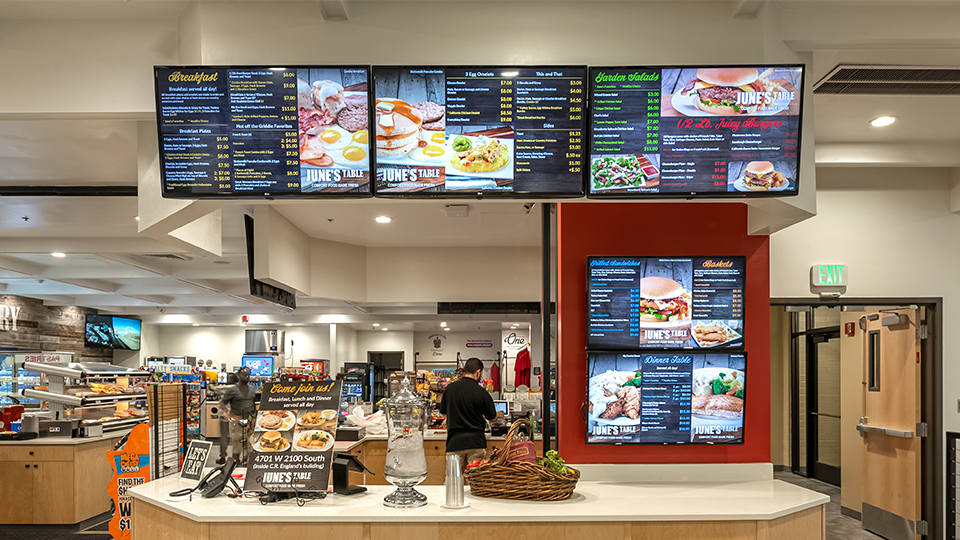Why Restaurants are Embracing Digital Menus
Since the COVID-19 pandemic began, restaurants have been changing how they do business. In an effort to stop the spread, many restaurants are now offering online ordering and curbside pick-up to complement their takeout options.
While trying to minimize exposure to the virus, some restaurants are realizing the benefits of digital menus. For example, Visix explains how restaurants can quickly update digital menus with seasonal specials or promotions and effortlessly swap out breakfast, lunch, and dinner menus. Digital menus are also effective marketing tools.
Although menus serve one distinct purpose, digital menus can be used in a variety of ways. For instance, digital menus reduce the need to disinfect laminated menus after every guest, and they support the self-service model that has quickly become the norm.
Here are 4 ways restaurants are using digital menus to their advantage.
- Digital menus support self-service kiosks
You may have noticed some restaurants using self-service kiosks for ordering and payment. McDonald’s, for example, tested these kiosks as far back as 2006 and possibly even sooner. Today, it’s a staple in many locations and is set to become the new standard.
While some people understand that self-service kiosks reduce the need to pay employees, there’s another reason McDonald’s is dumping millions of dollars into transforming their stores: more money. Research has shown that people actually buy more stuff when they use self-service touchscreen devices.
Today’s customers expect self-service
Unlike previous generations, today’s consumers want self-service options. A 2019 survey from SOTI found that 73% of shoppers prefer self-service options in retail over personal interactions with employees.
Although this survey is several years old, the percentage of shoppers who prefer self-service continues to rise. Today’s consumers expect self-service options on all fronts, including online and in stores.
If you want to improve the customer experience, self-service is not long an option – it’s a must. While online ordering is generally self-service, digital menus make self-service ordering possible in the store.
- Digital menus make drive-thru ordering easy
Imagine waiting in line at the drive-thru at 8 A.M. and having to sift through all the lunch items to find the breakfast items. The breakfast menu might be hard to see, depending on where it’s located, the size of your car, and how far you are from the ordering speaker.
With a digital menu board, a drive-thru location can create full menu boards for breakfast, lunch, and dinner. Rather than force customers to hunt down the food they can order, the entire menu will be available.
With a full menu for breakfast, the options can be presented in larger text with more photos. Or, the restaurant can add more selections to the menu without having to worry about running out of space.
Digital menus can also eliminate most people ordering breakfast food without knowing breakfast has already ended. There will always be people who order breakfast burritos for dinner, but at least people won’t be enticed by seeing it on the menu.
- Digital menus in the store
Editing menu items or prices is challenging. If you’ve ever been to a fast food restaurant that combines multiple businesses, like KFC and Taco Bell, the menu is huge. There are so many items on the menu, it’s hard to read even with good eyesight standing right in front of the cashier.
With a digital menu board, any item can be corrected in minutes from the computer. If an item is out of stock, the item can be crossed out or removed. When prices increase, the prices can be updated quickly using software. When new items need to be added, they can be programmed in from a computer.
- Digital menus on tablets for ordering and payment
Some restaurants are using digital menus loaded on tablets that sit on the table. For example, The Olive Garden rolled out tabletop tablets back in 2015. When customers are seated, they use the tablet to place their order, thus eliminating all personal interaction with staff until their order arrives.
These tablets can also be used to call wait staff at any time, order additional food without having to flag someone down, kids can play games (for a fee), and you can even pay your bill from the table.
Digital menus will eventually become standard
Although the COVID-19 pandemic increased interest in digital menus, the digital revolution will ensure that paper menus are all but phased out. At some point, digital menus will become a standard part of the “new normal.”






